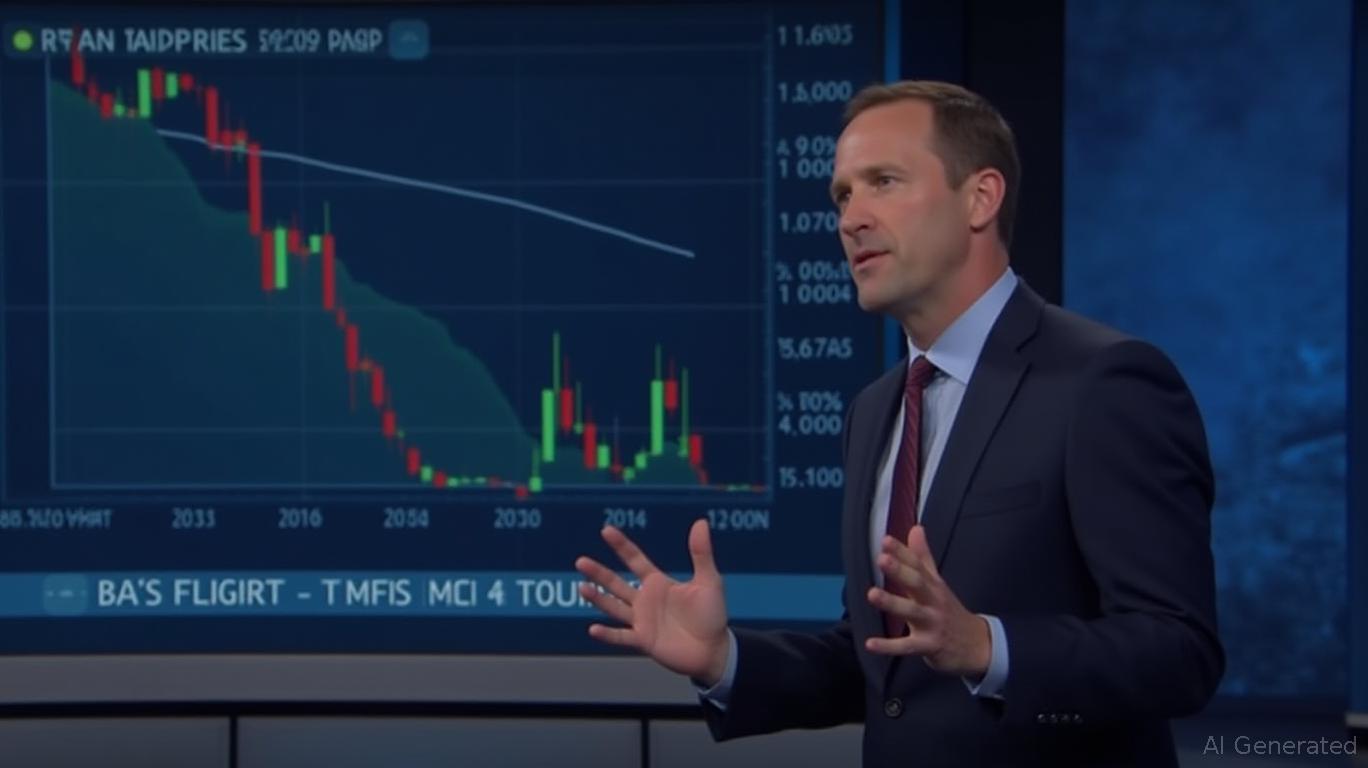Canada Sets November Stablecoin Regulations to Prevent Capital Outflow and Safeguard National Sovereignty
- Canada’s November 4 budget will formalize stablecoin regulations as payment instruments, aligning with U.S. standards to curb capital flight to dollar-backed tokens. - Industry leaders warn delayed regulation risks Canadian bond demand, higher interest rates, and loss of monetary policy control due to U.S. stablecoin dominance. - Proposed rules include licensing, reserve requirements, and redemption terms to mitigate systemic risks, while Loon’s CAD-backed stablecoin aims to build domestic digital infras
Canada is preparing to introduce a detailed regulatory system for stablecoins in its federal budget on November 4, aiming to meet international benchmarks and limit the outflow of capital into U.S. dollar-based tokens. Finance Minister François-Philippe Champagne’s forthcoming budget will establish clear guidelines for stablecoins, which have previously existed in a legal gray area and were often categorized as securities or derivatives in Canada, according to
The push for regulation is driven by worries about maintaining economic independence and financial security. Industry figures, such as John Ruffolo from the Council of Canadian Innovators, have cautioned that postponing regulatory action could reduce demand for Canadian bonds, push up interest rates, and undermine the Bank of Canada’s authority over monetary policy. Ruffolo, as cited by

The regulatory plan in Canada intends to designate stablecoins as payment tools, similar to the approach taken in the U.S. under the recently enacted GENIUS Act, as reported by Live
The upcoming budget is anticipated to specify licensing criteria for stablecoin providers, standards for reserve assets (such as top-tier securities or cash), and rules for redeeming stablecoins, according to Live Bitcoin News. These steps are designed to strengthen consumer safeguards and reduce systemic threats, especially as stablecoins increasingly rival conventional banks. For instance, Ron Morrow, the Bank of Canada’s executive director for payments, has stressed the importance of national regulation to address vulnerabilities exposed by the rapid adoption of digital assets, as highlighted by Bloomberg.
In a related development, Canada is advancing its own stablecoin ecosystem. Calgary-based fintech company Loon has secured $3 million to launch a regulated Canadian dollar stablecoin, having acquired the CADC token from Paytrie, as detailed in a
On the international stage, Canada’s actions are in step with regulatory efforts in the European Union (through MiCA rules) and in Asian markets, as previously covered by The Block. Nonetheless, some critics, including U.S. Senator Elizabeth Warren, have raised doubts about the effectiveness of the U.S.’s relatively lenient regulations, warning of possible regulatory gaps, as mentioned in The Block’s reporting. In Canada, the discussion continues as policymakers seek to balance the encouragement of innovation with the need to manage systemic risks.
Disclaimer: The content of this article solely reflects the author's opinion and does not represent the platform in any capacity. This article is not intended to serve as a reference for making investment decisions.
You may also like
Regulatory transparency drives a boom in crypto ETFs, with major players such as T. Rowe Price joining the market
- Canary Capital launches first U.S. ETFs for Litecoin and HBAR on Nasdaq, enabled by SEC's post-shutdown regulatory clarity streamlining crypto fund approvals. - T. Rowe Price files active crypto ETF targeting 5-15 assets including Bitcoin, while Fidelity and Osprey expand offerings, signaling institutional adoption acceleration. - Over 155 crypto ETFs await approval as eased regulations and growing demand drive market maturation, with analysts predicting over 200 listings in the next year.
Privacy, Reimagined
Bitcoin News Update: The Appeal of Bitcoin Compared to Liquidity Concerns: S&P Removes Strategy from Index
- S&P Global downgraded Strategy Inc. to junk status, removing it from the S&P 500 due to heavy crypto exposure and liquidity risks. - The company holds 640,808 BTC ($74B) but faces $15B in convertible debt, risking asset liquidation if Bitcoin prices drop. - CEO Michael Saylor remains bullish, aiming for a $2T Bitcoin portfolio by 2040 despite market volatility and mixed crypto treasury results. - JPMorgan and others are adapting to crypto, allowing digital assets as loan collateral, signaling growing ins

Uniswap News Today: MetaMask Token Buzz Highlights Drive Toward Ecosystem Decentralization
- MetaMask's potential token "MASK" speculation intensified after a password-protected claim portal emerged, raising 2025 launch odds to 35% on Polymarket. - Consensys CEO Joe Lubin hinted at a token as a "step toward decentralization," while a $30M loyalty program suggests ecosystem expansion efforts. - Co-founder Dan Finlay warned against phishing risks, emphasizing official channels for any token distribution amid past fake claim site attacks. - Market reactions highlight crypto volatility, with MetaMas
